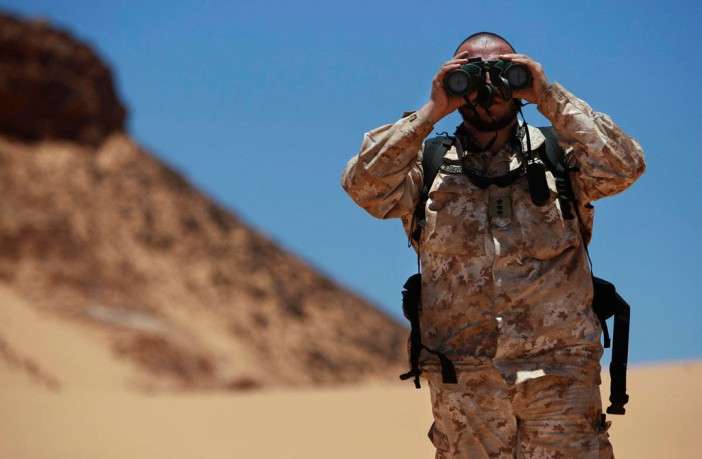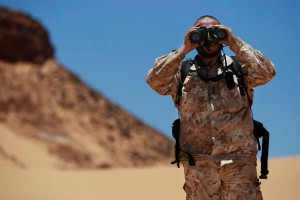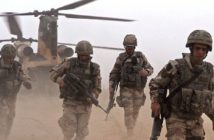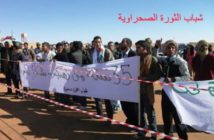UN NEWS CENTRE
UN Photo/Martine Perret
A Military Liaison Officer of the UN Mission for the Referendum in Western Sahara (MINURSO), looks through binoculars during a ceasefire monitoring patrol in Oum Dreyga, Western Sahara (June 2010).
United Nations Secretary-General Ban Ki-moon is deeply concerned over the tense situation that has developed in the narrow buffer strip in south-western Western Sahara between the Moroccan berm and the Mauritanian border as a result of changes in the status quo and the introduction of armed units from Morocco and the Polisario Front in close proximity to each other.
In a statement issued this evening by his spokesperson, Mr. Ban called on both parties to suspend any action that alters that status quo and to withdraw all armed elements so as to prevent any further escalation and permit the UN Mission for the Referendum in Western Sahara (MINURSO) to hold discussions with both parties on the situation.
“The Secretary-General stresses the importance for both parties to adhere to their obligations as per the Military Agreement number 1, and the need to respect the letter and the spirit of the ceasefire agreement,” the statement concluded.
Western Sahara is located on the north-west coast of Africa bordered by Morocco, Mauritania and Algeria, The colonial administration of Western Sahara by Spain ended in 1976. Fighting later broke out between Morocco and the Polisario Front. A ceasefire was signed in September 1991. MINURSO was deployed that year to monitor the ceasefire between the Government of Morocco and the Polisario Front and organizing, if the parties agree, a referendum on self-determination in Western Sahara.
A revised settlement plan was proposed by the United Nations after seven years of diplomatic consultations was rejected by one of the parties in 2004. In approving the current phase of direct negotiations in 2007, the UN Security Council called for “a just, lasting and mutually acceptable political settlement which will provide for the self-determination of the people of Western Sahara.”








